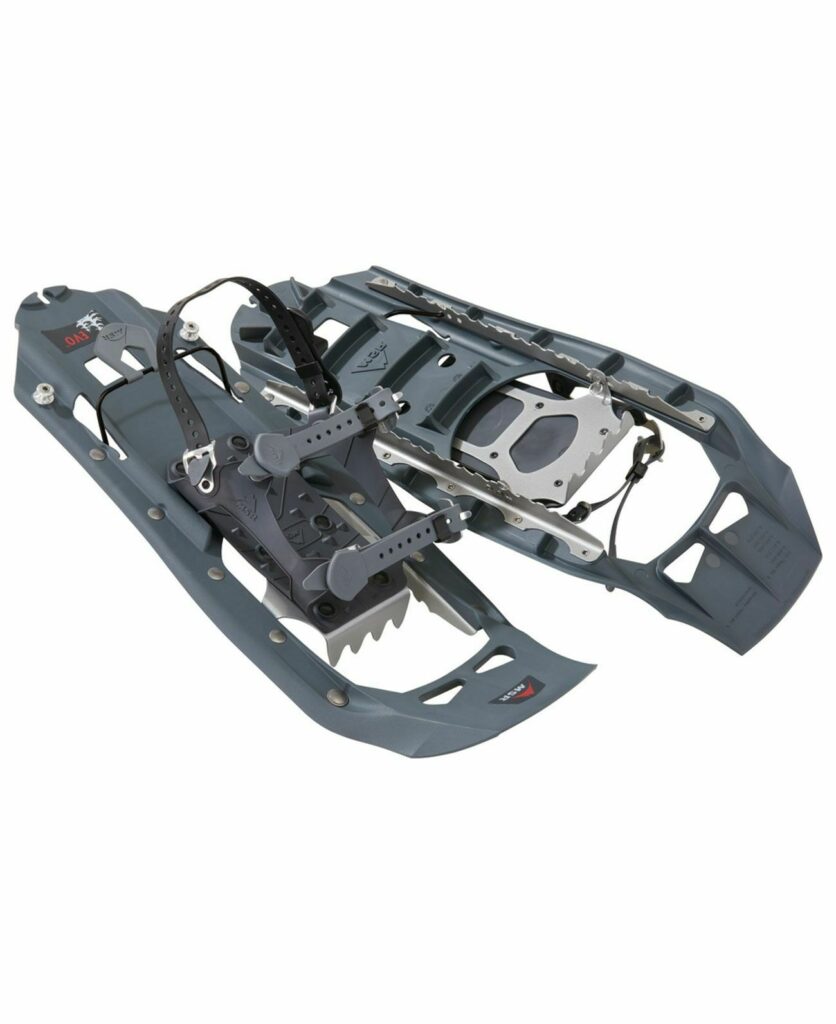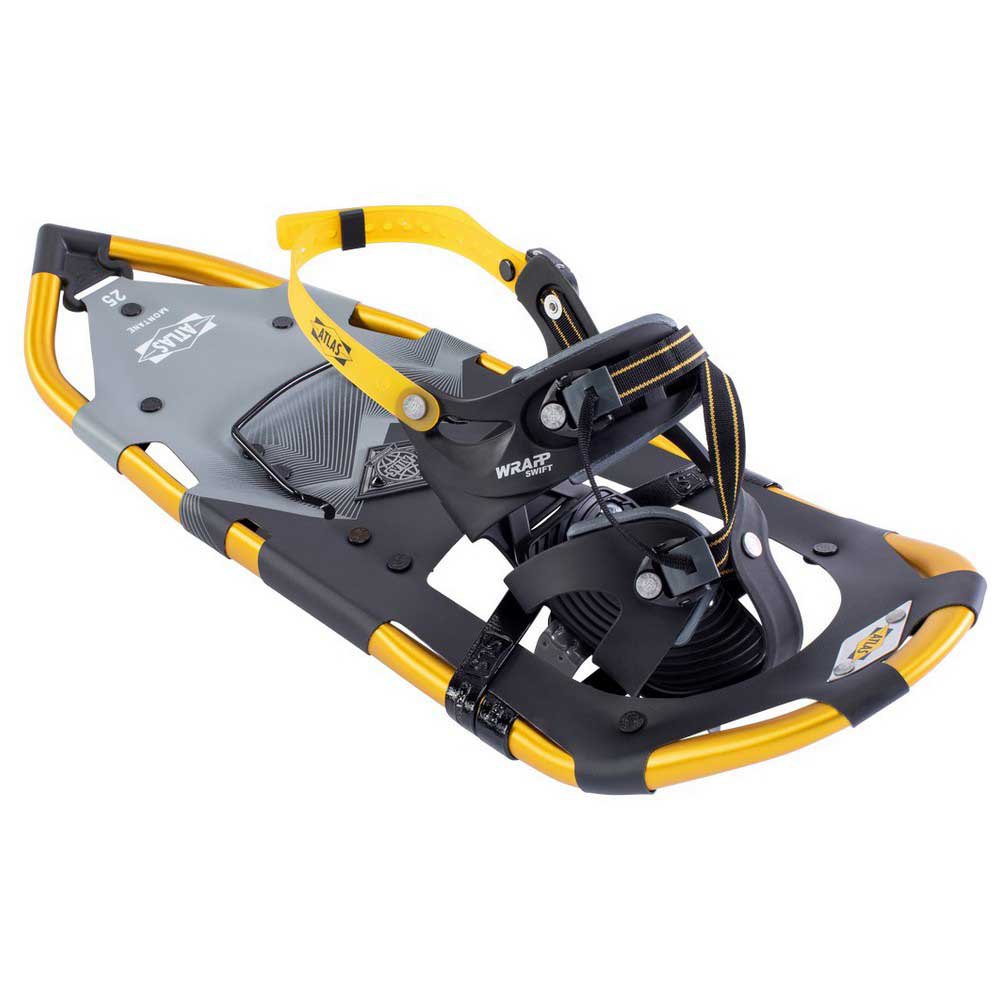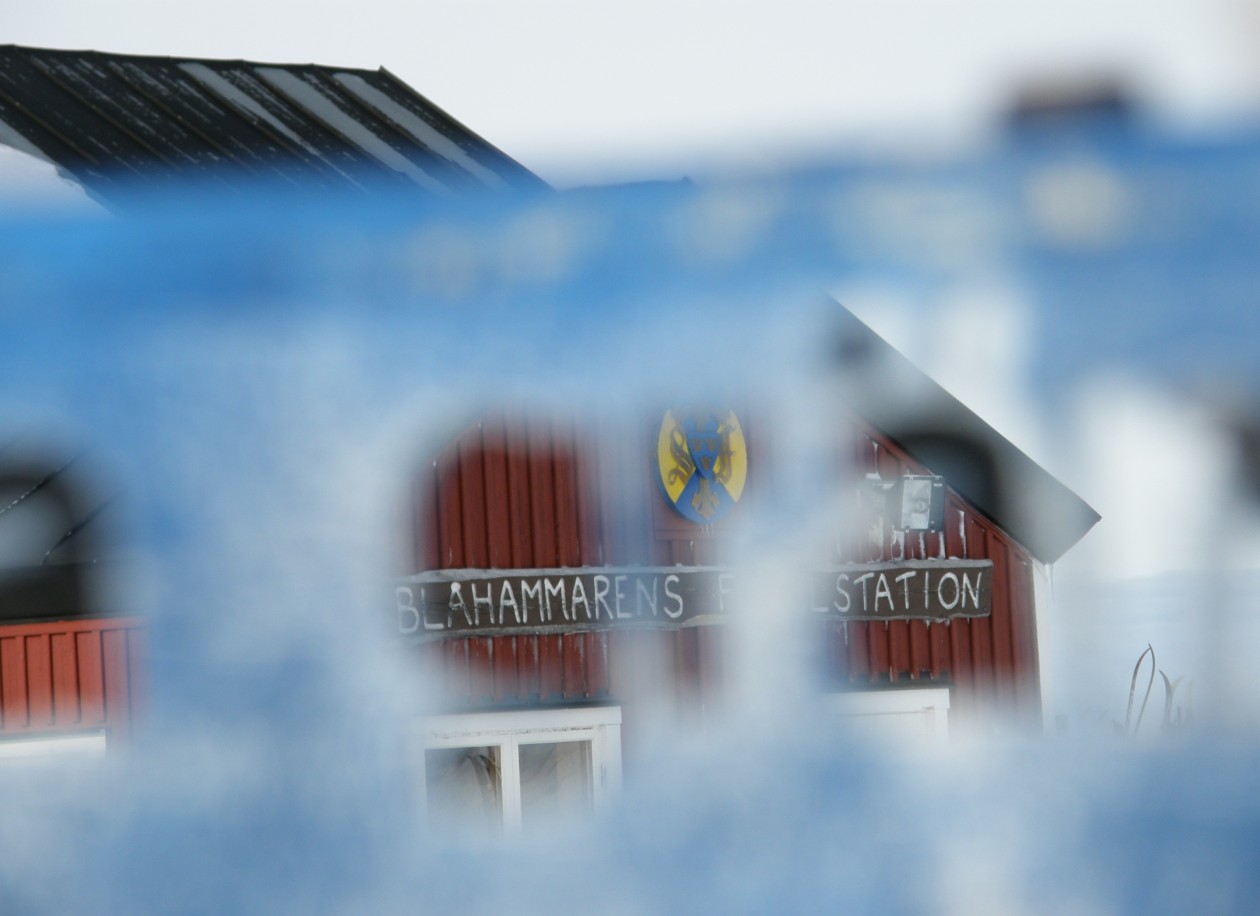Todays topic will be how to chose the right snow shoe. First of all you need to decide what activity you are going to do. Recreation-hiking, or technical snowshoes or running/fitness snowshoes? If we start with the hiking shoe; it build up with a simple binding, it got a rounded frame, which is helpful for deep snow, or a v-tail frame (pointed in the back), which is helpful for snow build-up and increased maneuverability. It is made of TPU plastic, aluminum frames, white ash, or recyclable materials. Traction; Little to average traction, including steel, aluminum, or plastic cleats underneath the snowshoe’s toe and/or heel. You’ll occasionally find crampons underneath the sides of the foot, though it’s not as common.

The technical snowshoes help navigate unpredictable terrain and have the most features on them. For this reason, these snowshoes are usually more pricey when compared to other models. But, they pack advanced features and are made of very durable materials. Snowshoes in the technical category may feature the words “alpine,” “mountain,” “ascent,” or similar descriptions. Also, if choosing snowshoes for snowboarding, technical snowshoes are the way to go. These snowshoes are a must-have if you plan to break your trail through steep terrain.

It got a more advanced bindings for a tighter and more precise fit, such as a toe box or shoe-like binding. You may also find nylon, polyurethane, or TPU straps ideal for a wide variety of foot sizes (or snowboard boots) or a BOA closure for easy use with gloves. The frame might include a serrated frame, which can be heavy but provides excellent grip when mountaineering, or can be tubular (rounded at both edges) or v-frames (round at toe, pointed at heel) for deep snow. Its Made of very durable materials like an aluminum frame and nylon decking, carbon fiber, or other strong materials. When it comes to traction; it has a aggressive traction such as cleats/crampons under the toe, heel, and sides that may be at various angles to provide advanced grip. Accessories; Support for the foot, such as a heel lift or bar to provide extra calf support while climbing a steep slope, or toe/heel pieces to limit sliding of your foot while in the binding.
Tips For Snowshoe Beginners – YouTube
See ya tomorrow…

Graet Bergman.
What is your experience according to the binding? Do you prefer slings or pumplocks? What about icing in the technical parts
Well, it will not be a quick answer. But my opinion of this is that for a easy walk/hike with snowshoes the pumplocks will be fine. But on a more advance one , or a long tour I would suggest sling one.